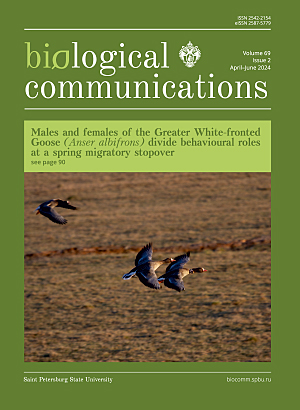Intraspecific variation of Scorpaenopsis possi Randall et Eschmeyer, 2002 (Pisces: Scorpaenidae)
DOI:
https://doi.org/10.21638/spbu03.2024.207Abstract
The genus Scorpaenopsis has been intensively studied in recent decades. Sixteen species were known before the revision by Randall and Eschmeyer, who described 8 new species in 2002, and nowadays 29 species are known. Two specimens of Scorpaenopsis from the collection of the Zoological Institute of the Russian Academy of Sciences are intermediate in a number of parameters between Scorpaenopsis possi Randall et Eschmeyer 2002 and Scorpaenopsis eschmeyeri Randall et Greenfield 2004. The range of S. possi extends from the Indian Ocean coast of Africa and the Red Sea to the Marquesas Islands in the Pacific Ocean, the latitude of the range lies between the 30th latitudes of both hemispheres. The species S. eschmeyeri inhabits a much smaller range from the east coast of Australia to the island of Fiji. The aim of this work is to explain the appearance of S. possi, similar to S. eschmeyeri in some morphological diagnostic characters, almost 12,000 km apart from its range. The number of soft rays in the dorsal fin, which is unusual for the genus Scorpaenopsis, is described. Due to the lack of persistent distinguishing characters between S. possi and S. eschmeyeri, it is highly probable that both are conspecific; in that case S. eschmeyeri would be a junior synonym of S. possi.
Keywords:
biodiversity, distribution, Indian Ocean, morphology, Scorpionfishes, taxonomy
Downloads
References
Downloads
Published
How to Cite
License
Articles of Biological Communications are open access distributed under the terms of the License Agreement with Saint Petersburg State University, which permits to the authors unrestricted distribution and self-archiving free of charge.





